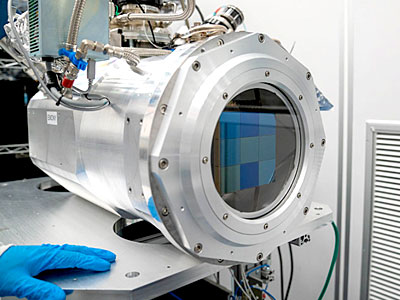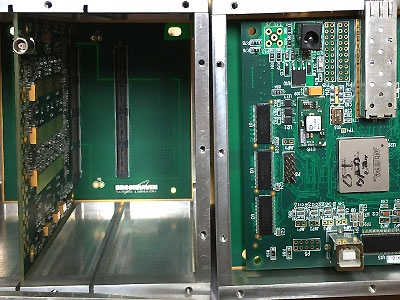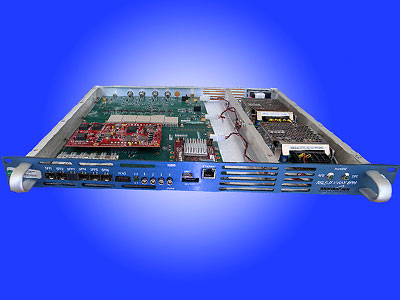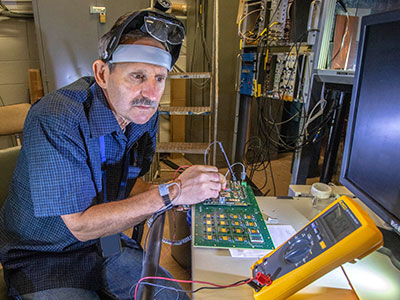System Development
Electrical Engineering and Systems Integration
Electrical systems must be designed according to different specifications, including physical size, operational environments, and signal types and levels.We develop customized solutions to meet such specifications for various physics, astronomy, and homeland security applications.
Our Capabilities
- Design and fabrication of electronic receivers capable of operating in standard and challenging environments, such as pressures ranging from 10E-7 to 10E-13 torr
- Elimination of signal corruption in radio-frequency receivers
- Development of readout electronics with detection limits in the <10 e- range
- Protection of application-specific integrated circuits (ASICs) for integration into low-noise compact electronics
- Customization of proton, electron, and x-ray beam position monitors (BPMs) for different particle accelerators
Case Studies
Rubin Observatory Camera

A customized vacuum chamber to test the sensors for the Rubin Observatory Legacy Survey of Space and Time Camera.
Starting in 2023, the Rubin Observatory’s Simonyi Survey Telescope in Chile will take more than 800 panoramic images of the sky each night with a 3.2-gigapixel charged-coupled device (CCD) camera. For this camera, we built a customized setup with a vacuum chamber and x-ray emission devices to test and calibrate of a series of individual sensors, which had to meet a noise requirement of less than eight electrons. We then assembled 189 sensors that passed the performance test into 21 arrays, or “rafts,” containing readout electronic boards. Rafts were shipped to SLAC National Accelerator Lab for integration into the telescope.
Neutron Detector

An analog board (left) with slots to directly plug in TlBr detectors and a digital board counterpart (right). The final receiver system for BTI will be miniaturized to fit into a handheld device.
Bubble Technology Industries (BTI)—a manufacturer of neutron detectors for homeland security applications—tasked us to propose a compact, power-efficient design for neutron detection based on TlBr detectors for radiological threat identification. We designed an initial receiver board for proof-of-principle tests and are now miniaturizing this prototype to meet BTI’s requirements.
Beam Position Monitors

National Synchrotron Light Source II x-ray BPM.
Resolving beam position in particle accelerators is essential to keeping the beam traveling inside the beam pipe. We designed a diamond detector that reads out beam position signals when it is struck by a particle beam. X-ray BPMs at Brookhaven’s National Synchrotron Light Source II (NSLS-II) and ion BPMs at Brookhaven’s Alternating Gradient Synchrotron and Relativistic Heavy Ion Collider (RHIC) are using this detector.
Gamma-Ray Detector

A staff member probes the output of analog-to-digital converters for the multicrystal detector array under development for NASA.
Gamma rays are the highest-energy form of light in the universe. For their gamma-ray astronomy missions, the National Aeronautic and Space Administration’s Goddard Space Flight Center has requested that we develop a multicrystal detector array using both high-purity cadmium zinc telluride (CZT) and thallium bromide (TlBr). These materials, particularly TlBr, have a high stopping power to absorb gamma rays, which are emitted by exotic objects such as supernovae, black holes, and solar flares.




